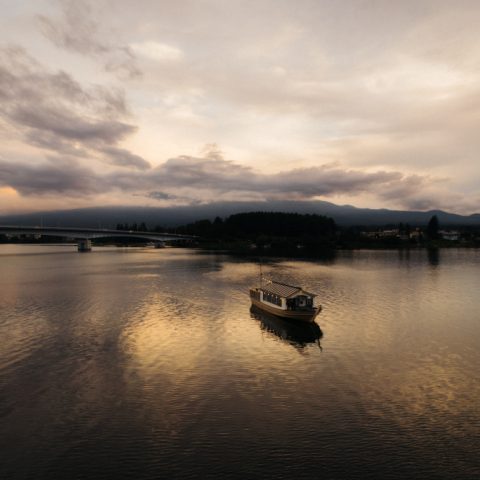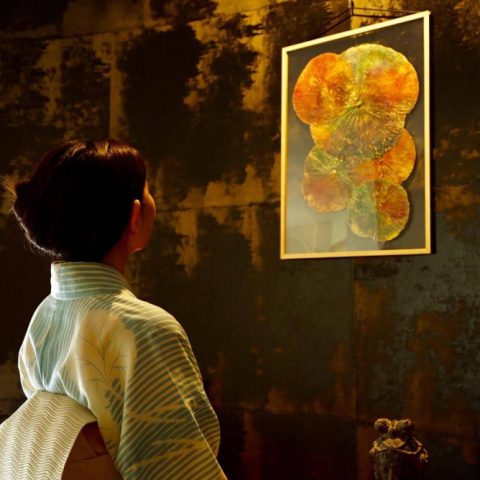
Today, we have the great pleasure and honor of interviewing Anna-san and Ryo-san from Tougei Tocoton. This renowned webshop will transport you to the enchanting and ethereal world of beautifully handcrafted ceramics. Anna-san, also known as l’Artesanna, the ceramist wizard, and Ryo-san, an expert web designer, open their doors and hearts to explain the marvelous and joy-filled universe of pottery.
Join us as we unravel the mysteries behind the making of the art, through its soul, and the journeys of its makers. Let us understand how such a creation came to life after binding two different, yet equally beautiful, cultures: Spain and Japan.
Hello, and thank you for your time today! Could you please introduce yourselves? Let our readers know more about your background, where you come from, who you are, etc.
Anna: Thank you very much for allowing us to talk about our project. My name is Anna, and I was born in Catalonia, a region in the west of Spain and south of France. I have been working in ceramics for about ten years now. I first studied in Barcelona, and later, once I moved to Japan, I also took classes in Osaka, where I live now. Ceramics allows me to get to know more deeply the two cultures already part of me, Catalan and Japanese. Through clay, I try to transmit these two cultures.
Ryo: Hello. My name is Ryo Kakumoto. I was born and raised in Abeno in the south of Osaka. It is an intense town, rich in human relations. Recently, I have been studying ceramics and visiting many people and companies as a CEO, making a lot of connections with people. I am 43 years old and love to travel, drink, and talk.

Anna san (left) and Ryo san
What sparked you to start making and selling pottery? What does ceramic represent to you, and why Japan?
Anna: My love for ceramics began as a hobby, and, as time passed, it became increasingly clear to me that I wanted to dedicate my time to creating and sharing my pieces with people interested in craftsmanship. When I met Ryo, we decided to open a ceramics studio so I could pursue my passion, and at the same time, we could be together living in Japan.
Ryo: Anna and I met in Japan and became a couple. However, I am a FtM, so we can’t get married in Japan. But Anna loves Japanese ceramics. I already have a web company, so I thought it would be better to work together in Japan. So I created a web and ceramics company and hired Anna as a board member.

Two circular art pieces, two plates and a white chopstick holder – Photo Credit: Anna san & Ryo san
Anna-san, you are originally from Spain, right? Do you perceive any differences or similarities between the processes used in the making of ceramic pieces in Spain and Japan? Are the techniques the same?
Anna: From a technical standpoint there are common points, but one can also find techniques that are unique to specific regions. Like any other craft, a significant part of learning ceramics involves observing and replicating the work of your master, leading each studio to develop its own techniques.
More broadly, Japan has techniques that lend traditional ceramics a distinct appearance, identifying them as Japanese pieces, such as kurinuki, mishima, or hakeme techniques.
For me, the biggest difference between Spanish and Japanese ceramics lies in the shapes of the pieces. Each culture requires specific shapes for practical use. A clear example is tableware: in Spain, we eat with a fork and knife, necessitating large plates with a sturdy base for cutting food. In contrast, in Japan, much of the food is already prepared in small portions, so plates are smaller and lighter. This allows for bringing the plate closer to the mouth while using chopsticks, and if food spills it lands on the plate rather than on oneself.

Anna-san (right) is explaining the basics of pottery – Photo Credit: Anna-san and Ryo-san
Many of your products use clay coming from Shigaraki, is there a particular reason for that? On others, you mix different clays, what differs between each technique?
Anna: I use Shigaraki clay because it’s of high quality and one of the closest clay production areas to Osaka, where our studio is located. In our workshops, we also use the same clay. It’s a strong clay that is easy to handle and doesn’t crack too easily, which is crucial, especially for those new to ceramics.
Some pieces feature a blend of white Shigaraki clay and red Izumo clay from another region of the country. I mix these clays to achieve different colors, but I apply, in general, all techniques to all types of clay that I use.

Anna-san (background left) is examining a person’s pottery – Photo Credit: Anna-san and Ryo-san
What is the creative process behind it? Does each of your creations have a particular story behind their making? If so, would you mind sharing one with us?
Anna: The creative process can vary greatly. One approach to starting a piece is to envision the type of object I want to create and its intended use. From there, I seek inspiration from our cultures, books, and experiences. I also consider which materials (clay, glazes, etc.) are best suited to achieve the desired design.
At other times, a very specific piece comes to mind, and I sketch it out to begin the project. During the process, I often realize how this design, seemingly out of nowhere, connects deeply with my life experiences and knowledge. There are also instances where the material itself guides us to a particular idea. While working on a piece and observing certain results, perfect designs for the material being used may come to mind.
I always strive for our pieces to represent a part of my creative world and to be functional. In Japan, there is a concept called “yonobi,” which emphasizes the beauty of functionality. For a piece to be of high quality it’s not enough for it to be aesthetically pleasing, it must also be well-designed to fulfill its purpose. I design my pieces with this mindset of ceramic artistry in mind.

Closeup of a white ceramic plate – Photo Credit: Anna san and Ryo san
Why mainly focus on dining vessels, and why establish your shop in Osaka?
Ryo: Because I am from Osaka and I am an Osaka LOVER. Also, the city is very accepting of different cultures. I would rather work here than in Kyoto or Tokyo, where there are already so many stores. It is interesting to have a pottery studio in deep Osaka, isn’t it?
Anna: Food is an integral part of our daily lives, and creating pieces that can be enjoyed every day is a great source of motivation for me. Moreover, you can explore various designs by considering the type of food being prepared, the portion sizes, and the presentation on the table. Ryo has always lived in Osaka, our place of residence, and we love this city dearly, which is why our studio is also located here.
Where do you get your inspiration from?
Anna: Primarily, I draw inspiration from my two cultures, Catalan and Japanese. I always say that moving to Japan has added another culture to my life, and I feel fortunate to seek inspiration from such distinct territories. I also find inspiration in nature, my memories, and ancient art.

Anna san
On your webshop, there is a “kai” (shell) vessel collection. Do shells and the sea hold a special meaning to you and your creations?
Anna: The seashell is an object that I associate deeply with both my birth culture and Japanese culture. The sea is a highly significant symbol here in Japan, and for me, it also represents the Mediterranean Sea. I suppose, in a way, it’s an image that symbolizes one of the points of connection between my two worlds.
What is your favorite part of the process of making the ceramics?
Anna: That’s a tough question! I really enjoy designing the piece, shaping it, and especially, opening the kiln to see the results.
Do you have a favorite piece? If so, why? What is the story behind it?
Anna: I don’t have a favorite piece, but there is one piece that I’m particularly proud of. It’s an amphora I made a few months ago specifically for a competition. For its design, I invented a story that is reflected in its decoration. I imagined that the amphora was made in my hometown during the era of ancient Rome, destined to travel by ship to Japan, but the ship sank near the Japanese coast. The decoration represents the marine life that has fossilized on the piece over hundreds of years. I thought that creating a piece that traveled between the two countries was also a way to build a bridge between the two cultures.

Everybody enjoying Anna san’s (center) workshop – Photo Credit: Anna san and Ryo san
I see that you also offer pottery classes in English. Can you please tell us more about them? How does it work etc?
Anna: We offer classes for travelers in English and Spanish. In these workshops, we mold typical pieces of Japanese gastronomy, such as a sake bottle or a sushi plate. Besides explaining how to make the piece, we share interesting points about food and drinks in Japan, allowing us to discuss the country through ceramics, which is one of my favorite aspects of pottery.
In these workshops, participants also receive a small ceramic piece as a gift. About two months later we send these pieces to the travelers’ homes. It’s always a delightful surprise for them to receive something they created during their journey and can use it forever. Our studio is located in a traditional Japanese house, offering visitors a chance to explore a space full of history as well.
Can anyone join them? Even true beginners? And from what age?
Ryo: Anyone from 5 years old can participate. Nationality, age, gender, and sexuality do not matter. LGBTQ people, people from overseas, locals, really anyone can come. We just want people to feel the clay, talk, and spend time with us at this pottery experience.
We want to thank you both once again for taking some of your precious time to talk with us and for your very insightful answers! We are very grateful and happy that they joined us for this interview. We genuinely loved learning more about their wonderful work, and we hope you did too. Make sure to check out TOUGEI TOCOTON’s Instagram page for more bedazzlement. You are sure to be amazed by their creative work!
Follow ‘’Tougei Tocoton’’ on:
Website: https://tougei-tocoton.com
Instagram: https://instagram.com/ceramics_tocoton
Facebook: https://www.facebook.com/tougeitocoton



